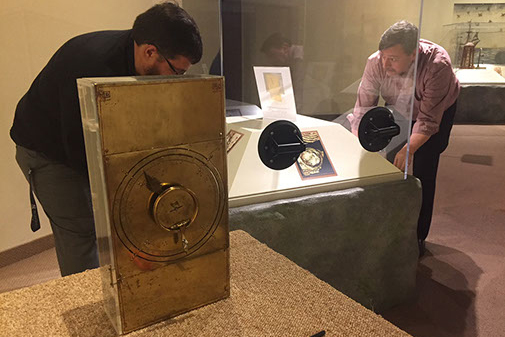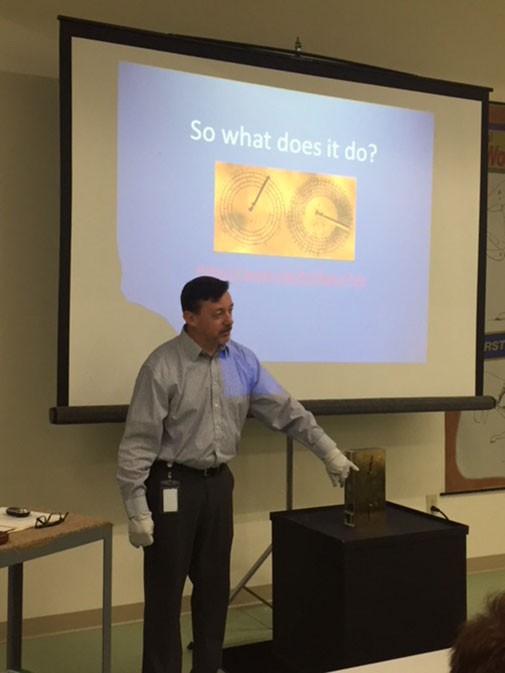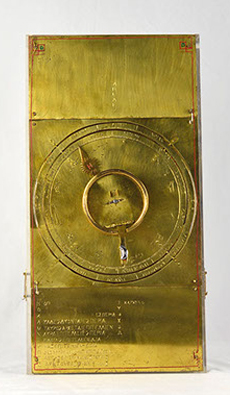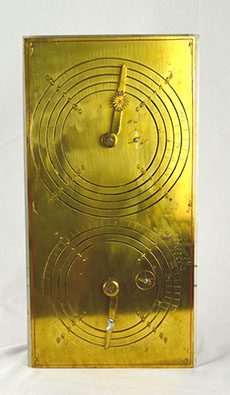
In 1900, off the coast of the Greek island of Antikythera, a group of sponge divers discovered a shipwreck of an ancient Roman merchant vessel. Among the variety of treasures found, including statues, pottery, and coins, was an unidentified calcified clump. Along with the other contents of the wreck, the clump was transported to the National Archaeological Museum in Athens for further examination. It’s ironic that this unidentified mass, later to be known as the Antikythera Mechanism, found among such exalted and obvious treasures, would rank with the wonders of the ancient world.
On April 11, 2018, during the National Watch & Clock Museum’s Lunch Time program, Noel Poirier, Museum Director of the National Watch & Clock Museum, presented the very first reproduction of the Antikythera Mechanism. Led by physicist Derek de Solla Price, a team of scientists, mathematicians, and engineers theorized the purpose of the device and created a model to reflect their findings. Although the raison d'être of the Antikythera device is debated, its mechanics were easier to determine. It’s important to remember, as Poirier pointed out, that at the time, the Greeks believed the Universe revolved around the Earth. Considering this misconception, Price’s team was able to reconstruct the device. The machine was a calendar that calculated the position of the Sun, phases of the Moon, and movements of the known planets.

Because ancient people believed that celestial events affected the outcomes of weddings, wars, and the installment of new rulers, it’s easy to understand why the Antikythera Mechanism would be a powerful tool. The day before his presentation, Poirier and I discussed how such a device would be useful to an oracle. We theorized how an individual who could accurately predict the movement of the known cosmos could be considered a consult to the gods.
This very discussion is telling about what makes this device so fascinating. There is enough information to know its function but nothing that divines its purpose. There is no specific mention of the mechanism in ancient texts and nothing that resembles it in any other ancient tool or mechanism. Lost to the ravages of time, it is up to us, the modern-day storytellers, to theorize who made it, who used it, and why.
Lunch Time talks at the National Watch & Clock Museum are free to the public. Visit the National Watch & Clock Museum on Facebook to find the next scheduled event. If you want to know more, please read “Clockwork Before the Clock and Timekeepers Before Timekeeping” written by Derek de Solla Price himself for the October, 1976, issue of the Watch & Clock Bulletin.

